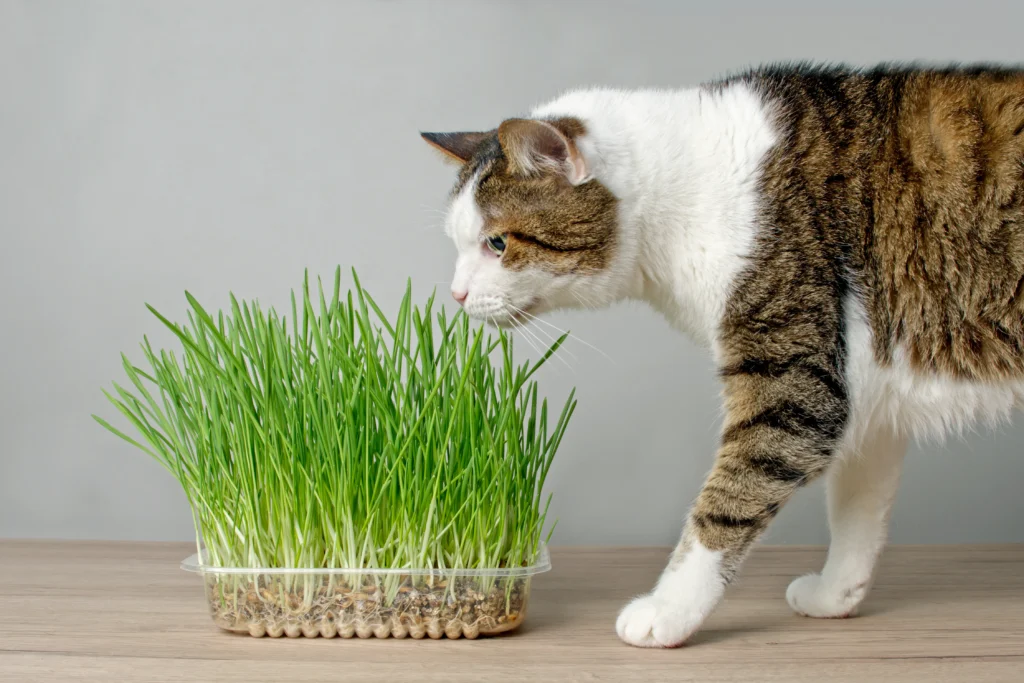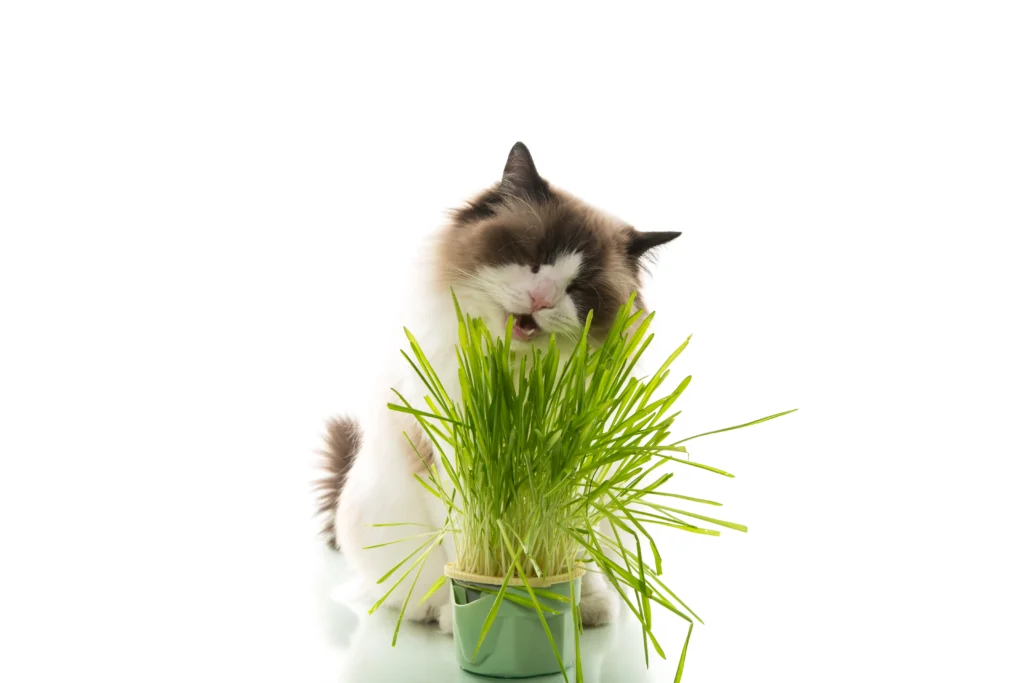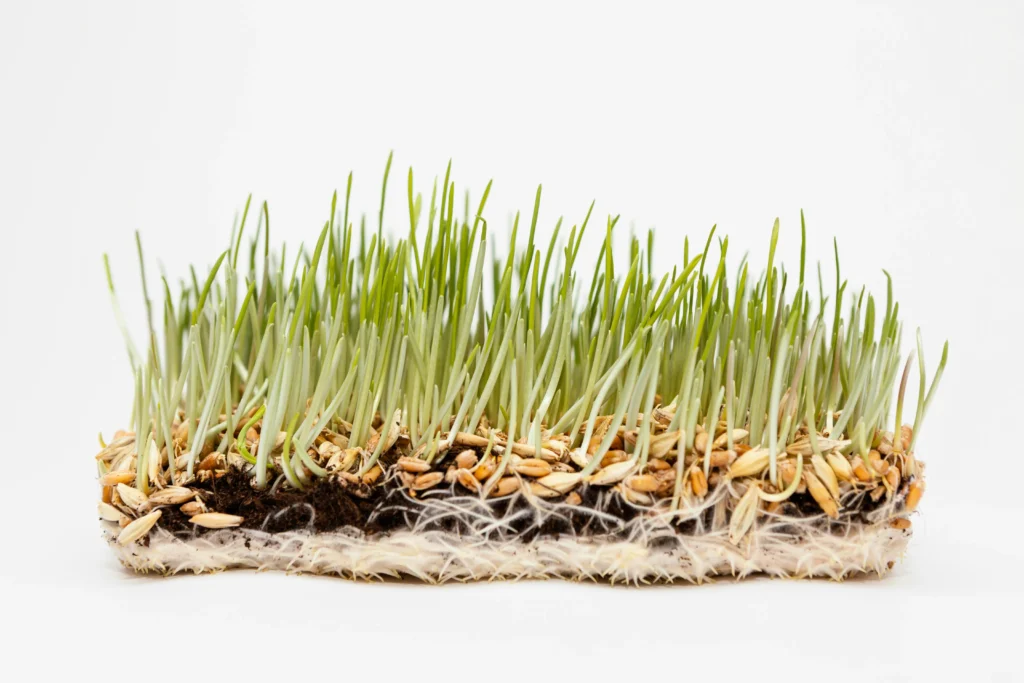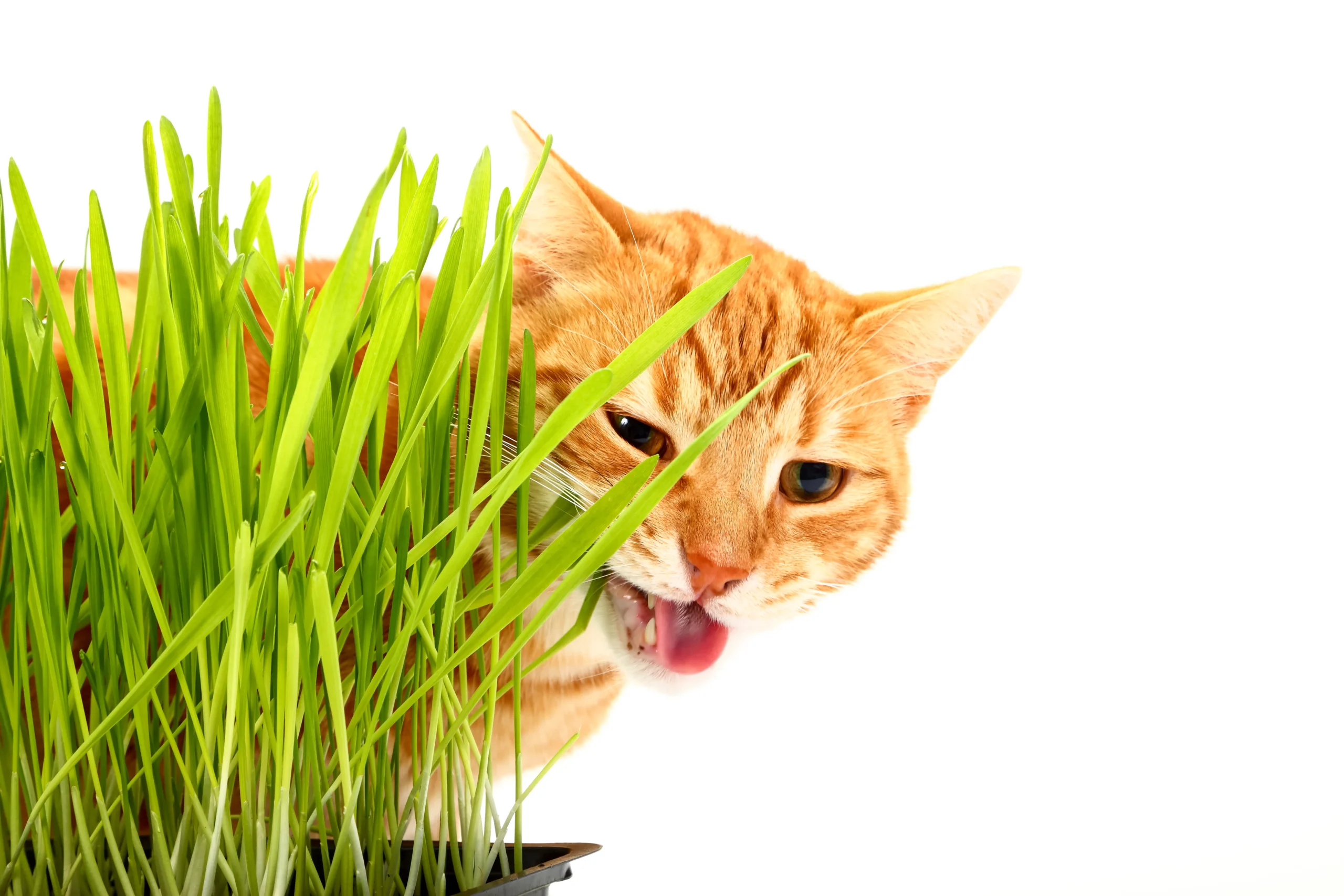Introduction: Why Cat Grass Seeds Matter for Your Feline Friend
If you’ve ever caught your indoor cat munching on your houseplants or attempting to nibble on potentially toxic greenery, you’re not alone. This natural behavior stems from their instinctual need for certain nutrients and digestive aids that fresh greens provide. This is where cat grass comes in – a safe, beneficial alternative that satisfies your pet’s craving for vegetation.
Cat grass seeds have become increasingly popular among pet parents who want to provide their feline companions with safe, accessible greenery. However, not all approaches to growing and offering cat grass are created equal. Simple mistakes in selecting, growing, or providing cat grass can potentially harm your beloved pet rather than help them.
In this comprehensive guide, we’ll explore the six most common mistakes pet owners make when dealing with cat grass seeds and how to avoid them. Whether you’re a first-time cat grass grower or looking to optimize your current setup, understanding these pitfalls will help ensure your cat enjoys all the benefits of fresh greens without any of the risks.

Understanding Cat Grass: A Quick Overview
Before diving into common mistakes, let’s clarify what exactly cat grass is. Unlike catnip, which produces a euphoric reaction in some cats, cat grass refers to various cereal grasses grown specifically for feline consumption. The most common types include:
- Wheatgrass for cats (Triticum aestivum)
- Barley grass for cats (Hordeum vulgare)
- Oat grass (Avena sativa)
- Ryegrass (Lolium)
These grasses provide essential nutrients, aid digestion, and offer a safe outlet for your cat’s natural grass-eating tendencies. Now, let’s examine what could go wrong when providing this seemingly simple treat.
Mistake #1: Using Non-Organic or Treated Cat Grass Seeds

One of the most critical errors pet parents make is using standard gardening seeds rather than organic cat grass seeds specifically intended for pet consumption.
Why This Matters
Many commercial seeds are treated with fungicides, pesticides, or growth enhancers that could be harmful to your cat. These chemicals can remain in the growing plants and potentially cause digestive upset or more serious health issues when consumed.
The Solution
Always opt for organic cat grass seeds specifically labeled for pet consumption. These cat grass seeds organic non-GMO options ensure that your feline friend isn’t ingesting potentially harmful chemicals. Quality matters tremendously when it comes to what your pet consumes.
When shopping for cat grass seeds, look for packages explicitly labeled as:
- Pet-safe
- Organic cat grass seeds
- Chemical-free
- Non-toxic grass for cats
- Cat grass seeds organic non-GMO
Many pet supply stores and online retailers now offer specialized cat grass kit options that come with everything you need, including safe seeds. If you’re wondering where to buy cat grass seeds that meet these standards, most pet specialty stores carry them, as do many online retailers dedicated to pet products.
Mistake #2: Improper Growing Conditions

Even with the right cat grass seeds, improper growing techniques can lead to problems with your cat grass for indoor cats.
Common Growing Mistakes
- Overwatering: Excess moisture creates the perfect environment for mold growth, which can be harmful to cats when ingested
- Poor drainage: Similar to overwatering, containers without proper drainage lead to waterlogged soil and potential mold issues
- Insufficient light: Cat grass needs adequate sunlight to grow properly; without it, plants may become weak or fail to thrive
- Overcrowding seeds: Planting too many cat grass seeds in a small container restricts air circulation and increases mold risk
The Solution: Proper Growing Techniques
When growing cat grass indoors, follow these guidelines:
- Use a container with adequate drainage holes
- Plant cat grass seeds at the recommended density (typically about 1 tablespoon per 4 square inches of soil)
- Water moderately, keeping soil moist but not soggy
- Place in a location that receives indirect sunlight for at least part of the day
- Ensure proper air circulation around your cat grass growing kit
Many pet parents find success with specialized indoor cat grass planter options designed specifically for optimal growing conditions. These planters often feature improved drainage systems and are sized appropriately for growing cat grass indoors.
Mistake #3: Offering Cat Grass at the Wrong Growth Stage

The timing of when you offer cat grass to your pet matters significantly, yet many owners don’t realize there’s an optimal window for consumption.
The Timing Problem
- Too young: Grass that’s just sprouted may not provide the same nutritional benefits and may be harder for cats to chew effectively
- Too mature: Overly mature grass can become tough, fibrous, and less palatable for your cat
- Inconsistent availability: Providing cat grass irregularly can lead to overindulgence when it’s available
The Solution: Perfect Timing
The ideal time to offer cat grass for indoor cats is when it reaches about 3-4 inches in height, typically 7-10 days after planting. At this stage, the grass is:
- Tender enough for easy consumption
- Nutritionally optimal
- Most appealing to most cats
For continuous access, consider maintaining multiple cat grass growing kit setups at different stages. This rotation ensures your cat always has access to fresh grass at the perfect stage of growth. Many DIY cat grass enthusiasts plant new containers every 1-2 weeks to maintain this rotation.
Mistake #4: Choosing the Wrong Type of Cat Grass Seeds

Not all cat grass seeds are equally beneficial or appealing to all cats. Using a type your specific cat doesn’t respond well to can lead to wasted effort and missed benefits.
The Type Matters
While wheatgrass for cats is perhaps the most common variety, some cats may prefer or respond better to other options like barley grass for cats or oat grass. Additionally, some cats may have specific sensitivities to certain types of grasses.
The Solution: Finding the Perfect Match
Consider these approaches to finding the best fit:
- Try variety packs: Some companies offer mixed cat grass seeds that allow you to determine which type your cat prefers
- Observe preferences: Notice which outdoor grasses your cat gravitates toward (if they have safe outdoor access)
- Consult your veterinarian: Some cats with specific health conditions may benefit from particular types of grass
When seeking the best cat grass seeds for your specific pet, remember that what works for one cat may not work for another. Experimentation may be necessary to find the perfect match.
Many pet parents find success with cat grass kit options that include multiple seed varieties, allowing for experimentation without the need to purchase cat grass seeds bulk quantities of each type.
Mistake #5: Ignoring Potential Contamination
Even with proper growing techniques, cat grass can become contaminated in ways many pet owners don’t consider.
Contamination Concerns
- Mold growth: Sometimes visible as fuzzy white patches, other times microscopic
- Bacterial contamination: Can occur from dirty containers or contaminated water
- Environmental contaminants: Household dust, cleaning products, or other airborne substances
- Pest infestation: Small insects may be attracted to the moist environment

The Solution: Vigilant Monitoring
To ensure your cat grass for indoor cats remains safe:
- Inspect grass daily for any signs of mold, discoloration, or unusual odors
- Wash hands before handling the grass or container
- Use filtered water when possible to avoid chlorine and other water treatment chemicals
- Place grass in locations away from household cleaning activities
- Replace the entire setup at first signs of contamination
Many cat grass growing kit systems now include antimicrobial components to reduce contamination risks. However, vigilance remains essential regardless of the system you use.
Remember that organic cat grass seeds can still develop mold or bacteria if growing conditions aren’t ideal. The “organic” designation refers to how the seeds were grown, not their resistance to contamination after planting.
Mistake #6: Misunderstanding the Role of Cat Grass in Your Pet’s Diet
Perhaps the most fundamental mistake is misunderstanding what cat grass should (and shouldn’t) be in your cat’s life.
Common Misconceptions
- Substitution for veterinary care: Some owners use cat grass as an alternative to proper medical treatment for digestive issues
- Meal replacement: Cat grass should supplement, not replace, proper feline nutrition
- Solution for all plant-eating behavior: While cat grass may reduce houseplant munching, some cats may have underlying issues that need addressing
- Confusing with catnip: Cat grass vs catnip are different plants with different effects
The Solution: Proper Perspective
Understand the appropriate role of cat grass:
- It’s a supplement: Cat grass provides additional nutrients and fiber but doesn’t replace complete nutrition
- It’s an aid: While it can help with hairballs and digestion, it doesn’t cure serious conditions
- It’s enrichment: Cat grass offers environmental enrichment and satisfies natural behaviors
- It complements veterinary care: Work with your vet if your cat has ongoing digestive or behavioral issues
For most cats, the cat grass benefits include:
- Providing additional fiber to help with hairball passage
- Offering a safe outlet for natural grass-eating tendencies
- Supplementing certain nutrients like folic acid and vitamins A, B, and C
- Mental and environmental enrichment
How to Successfully Grow Cat Grass: A Step-by-Step Guide
Now that we’ve covered the mistakes to avoid, let’s explore how to grow cat grass properly from start to finish.
What You’ll Need:
- Organic cat grass seeds or a complete cat grass kit
- A shallow container with drainage holes
- Potting soil or growing medium
- Water
- Sunny location
- Spray bottle (optional but helpful)
Step-by-Step Growing Instructions:
- Prepare your container: Fill with about 1-2 inches of moistened potting soil
- Sow the seeds: Sprinkle cat grass seeds evenly across the soil surface
- Cover lightly: Add a very thin layer of soil on top of the seeds
- Water gently: Use a spray bottle to avoid displacing seeds
- Cover temporarily: Place a damp paper towel over the container for the first 2-3 days
- Remove cover: Once sprouting begins, remove the paper towel
- Maintain moisture: Water gently when the top of the soil begins to dry
- Provide light: Place in a location with bright, indirect sunlight
- Monitor growth: Allow to grow to 3-4 inches before offering to your cat
- Trim as needed: If your cat doesn’t consume all the grass, trim it to maintain freshness
This process makes growing cat grass indoors straightforward and successful. For those seeking even more convenience, a cat grass growing kit often includes specialized containers designed specifically for optimal growth.
Where to Buy Cat Grass Seeds and Supplies
If you’re wondering where to buy cat grass seeds and related supplies, you have several excellent options:
- Pet specialty stores: Most carry at least basic cat grass kit options
- Garden centers: Many now offer pet-safe seed options
- Online retailers: Offer the widest variety of organic cat grass seeds
- Veterinary offices: Some sell recommended cat grass for indoor cats products
For those interested in purchasing cat grass seeds bulk quantities for ongoing growing, online specialty retailers often offer the best value. Look for suppliers that specifically cater to pet owners rather than general gardening suppliers to ensure you’re getting appropriate non-toxic grass for cats.
DIY Cat Grass vs. Pre-Grown Options
Both DIY cat grass approaches and pre-grown options have their advantages:
DIY Cat Grass Advantages:
- More economical, especially when using cat grass seeds bulk purchases
- Control over growing conditions and seed selection
- Satisfaction of providing homegrown treats
- Ability to maintain a continuous rotation
Pre-Grown Cat Grass Advantages:
- Immediate availability
- No waiting for growth
- No risk of growing mistakes
- Convenience factor
Many cat owners find that starting with a pre-grown option while simultaneously beginning their own DIY cat grass growing project provides the best of both worlds. This approach ensures continuous availability while you develop your growing skills.
Cat Grass vs. Catnip: Understanding the Difference
Many new pet owners confuse cat grass vs catnip, but they’re quite different:
Cat Grass:
- Consists of cereal grasses like wheat, barley, oat, or rye
- Eaten for nutritional benefits and digestive aid
- Generally produces no “high” or euphoric reaction
- Beneficial for virtually all cats
Catnip:
- Member of the mint family
- Produces a temporary euphoric reaction in approximately 70% of cats
- Usually not consumed in large quantities
- Primarily for behavioral enrichment rather than nutrition
Many cat owners provide both options for their pets, understanding that they serve different purposes in feline enrichment and health.
Safety Considerations for Cat Grass
While properly grown cat grass is generally safe, keep these important safety considerations in mind:
- Monitor consumption: Some cats may overindulge, which can cause temporary digestive upset
- Watch for allergic reactions: Though rare, some cats may show sensitivity to certain grass types
- Ensure stability: Place grass containers where they can’t be easily knocked over
- Separate from toxic plants: Keep safe grass for cats well away from any toxic houseplants
- Clean regularly: Wash containers thoroughly between plantings
For households with multiple pets, be aware that while cat grass seeds produce non-toxic grass for cats, some dogs may also show interest in the grass. While generally safe for both species, individual monitoring is recommended.
The Benefits of Organic Cat Grass Seeds
Choosing organic cat grass seeds offers several advantages over conventional options:
- Free from pesticides: No harmful chemical residues that could accumulate in your pet’s system
- No growth regulators: Contains only natural plant compounds
- Non-GMO assurance: Cat grass seeds organic non-GMO options avoid potential unknown effects
- Supporting sustainable practices: Organic growing methods are typically more environmentally friendly
- Peace of mind: Knowing you’re providing the purest option for your beloved pet
When selecting cat grass seeds organic non-GMO varieties, look for certification symbols from recognized organic certification bodies for verification of their organic status.
Innovative Cat Grass Planter Solutions
Beyond basic containers, several innovative indoor cat grass planter designs can make growing and offering cat grass even more convenient:
- Multi-tier systems: Allow continuous growing cycles at different stages
- Self-watering planters: Maintain optimal moisture without daily attention
- Cat-resistant designs: Prevent digging and tipping while still allowing grazing
- Decorative options: Aesthetically pleasing designs that complement home décor
- Travel-friendly versions: Compact designs for cats who travel with their owners
These specialized planters can make maintaining fresh cat grass for indoor cats simpler and more reliable. Many incorporate features specifically designed to address the common growing mistakes we’ve discussed.
Conclusion: Growing Healthy Cat Grass for Your Feline Friend
Providing fresh cat grass for your pet can be a rewarding experience that offers numerous health and behavioral benefits. By avoiding these six common mistakes, you’ll ensure your cat enjoys all the advantages of fresh greens without any unnecessary risks.
Remember these key points:
- Always choose organic cat grass seeds specifically designed for pet consumption
- Create proper growing conditions to prevent mold and contamination
- Offer grass at the optimal growth stage
- Find the type of grass your individual cat prefers
- Monitor for any signs of contamination
- Understand the appropriate role of cat grass in your pet’s overall health plan
With attention to these details, growing cat grass indoors can become a simple routine that enriches your cat’s life and strengthens your bond through the provision of thoughtful, species-appropriate enrichment.
For more information about pet care and enrichment, visit our other helpful articles at PetsMemes.com.
FAQs About Cat Grass Seeds
Q: How often should I replant cat grass? A: For optimal freshness, replant every 2-3 weeks, or when the grass begins to yellow or wilt.
Q: Can kittens eat cat grass safely? A: Yes, kittens can safely consume cat grass, but introduce it gradually and monitor their reaction.
Q: Is it normal for cats to vomit after eating cat grass? A: Some cats may vomit after eating cat grass, which can be normal. The grass can help them expel hairballs and indigestible material. However, frequent vomiting should be discussed with your veterinarian.
Q: Can I use grass from my lawn instead of growing cat grass? A: This isn’t recommended, as lawn grass may be treated with chemicals or pesticides harmful to cats. Stick with specially grown safe grass for cats.
Q: How long does cat grass last once it’s grown? A: With proper care, cat grass typically lasts 2-3 weeks before it begins to deteriorate in quality.
Q: Can I reuse soil from previous cat grass plantings? A: It’s best to use fresh soil each time to reduce the risk of mold or bacterial growth.
Q: Why is my cat not interested in the cat grass I grew? A: Try different varieties like wheatgrass for cats or barley grass for cats. Some cats have preferences. Also, ensure the grass is at the optimal 3-4 inch height when offered.
Q: Is growing cat grass messy? A: It can be, but using a dedicated indoor cat grass planter with proper drainage can minimize mess. Some designs specifically address seed scattering and soil spillage.
Resources for Cat Grass Growers
Here are some trusted external resources for more information on cat grass and feline nutrition:
- Cornell University College of Veterinary Medicine – Expert information on feline health and nutrition
- American Association of Feline Practitioners – Guidelines on feline environmental needs
- ASPCA Animal Poison Control – Information on toxic and non-toxic plants for cats
- Journal of Feline Medicine and Surgery – Research articles on feline health and behavior
Remember, while cat grass offers many benefits, it’s just one component of a comprehensive approach to feline health and happiness. Regular veterinary care, proper nutrition, and plenty of environmental enrichment remain essential foundations of excellent cat care.
Check out our other helpful articles about cat care and enrichment on PetsMemes.com





Leave a Comment